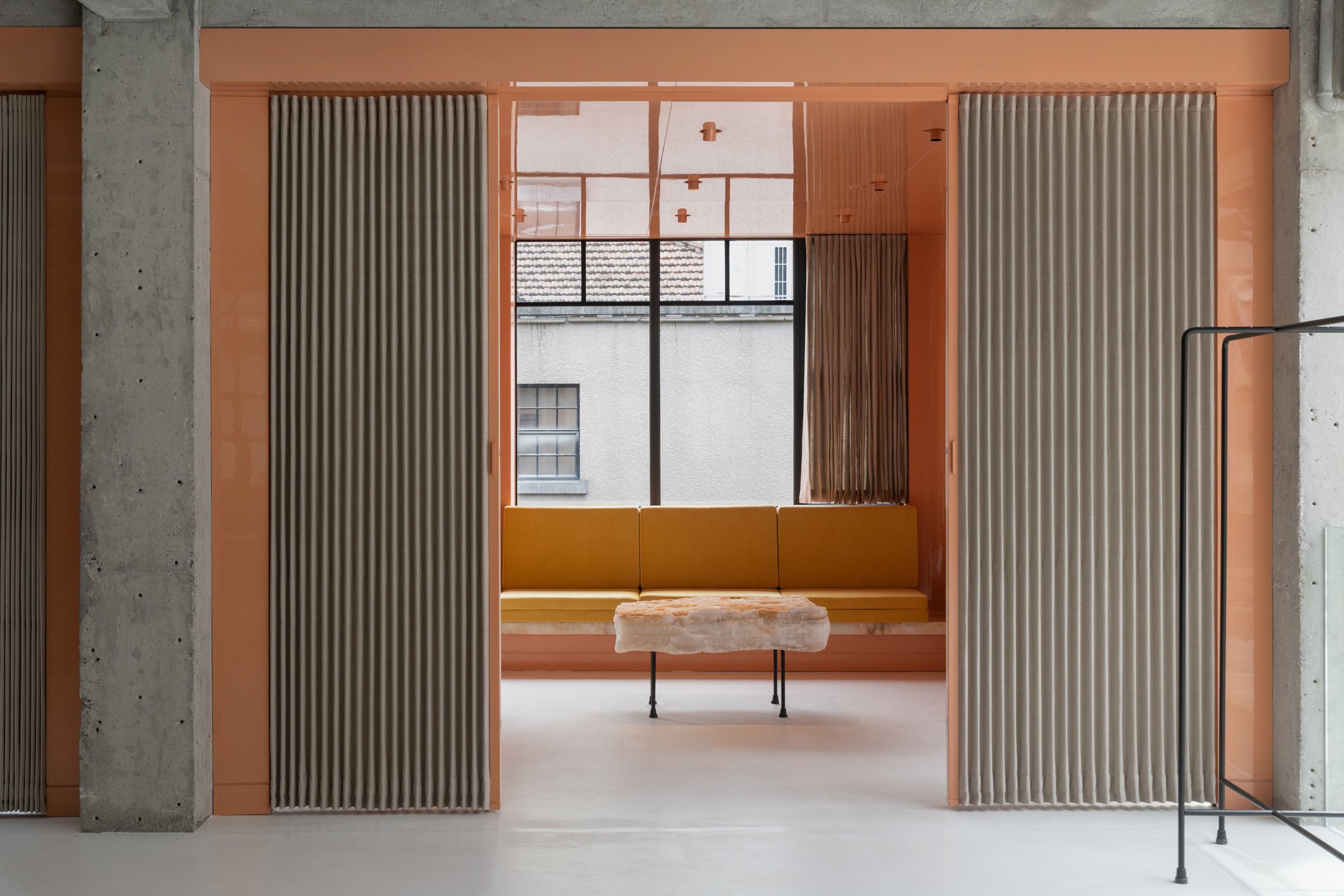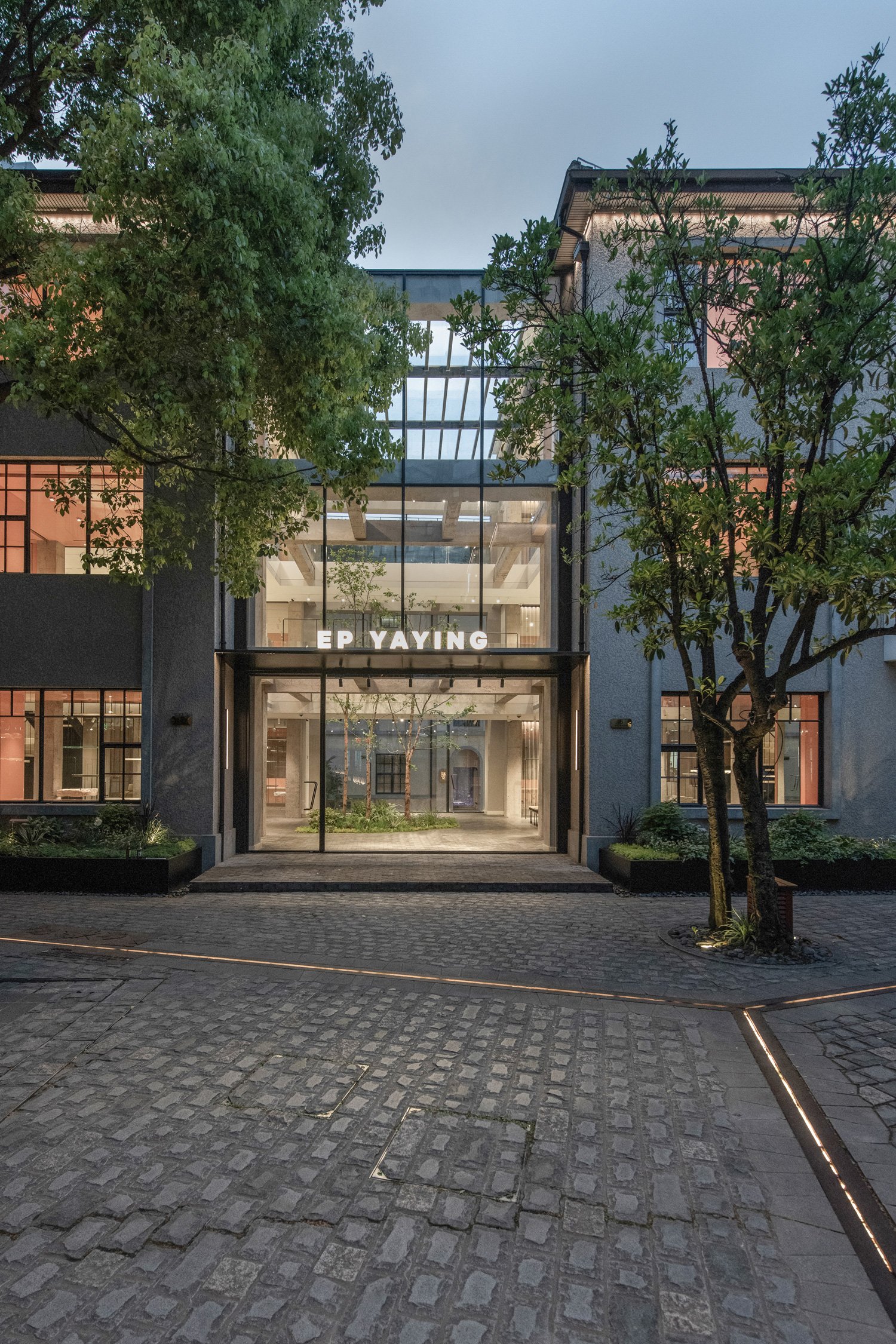EP YAYING
FRANKLIN AZZI ARCHITECTURE
Franklin Azzi is no stranger to forming creative collaborations with some of the most exciting figures in the fashion industry. His latest project with Creative Director Serge Ruffieux is a testament to this, as they have teamed up together to work on a new boutique in Shanghai for the Chinese ready-to-wear label, EP Yaying.
In approaching the design of the store, the two Parisian creatives found symbolic meaning in the brand’s name as EP Yaying is translated to ‘Pledge to Quality’. They sought to integrate the brand’s values within the store’s aesthetic expression, as well as it’s layout. In order to express this interpretation of the brand, they looked towards and reflected on the brand’s Chinese heritage and craftsmanship, and then explored ways in which they could weave it into a contemporary context for the boutique store.
The new store is set within a former colonial house in Shanghai that has been completely renovated, and opens entirely to its outdoor surroundings with a courtyard, creating a fluid dialogue between the interior and exterior of the site and inviting public engagement. Through this fluidity, the two Parisians desired to create this notion of strolling from Shanghai to New York by bridging a number of juxtapositions within the design. This stems from the intricate play between the materials such as natural versus man-made, which is found throughout the store, such as jade and concrete combined with lacquer and embroidery as they unite to unanimously create a serene oasis within the city.
In the following interview, Azzi and Ruffieux share their creative process in the design for this new boutique store.
Franklin Azzi and Serge Ruffieux, how did you come to work together on the architectural concept for EP YAYING?
Serge Ruffieux : I was working with EP YAYING, which means ‘pledge of quality’ in Chinese, on rethinking the architectural concept of its boutiques worldwide. The company’s founders, who are collectors with a keen eye for art and architecture, wanted to roll out the label internationally. As a creative director, I have always had a taste for design and architecture. For this project I wanted to work in tandem with a strong personality in contemporary architecture. During a trip to Los Angeles, I discovered the boutique that Franklin Azzi had designed for Isabel Marant. The feel of the place made an impression on me. I immediately felt that it had a powerful resonance with my creative approach.
Franklin Azzi : When Serge Ruffieux proposed this collaboration, I immediately felt that it was a fantastic opportunity to continue the dialogue begun with several other figures from the world of fashion, such as Christophe Lemaire, Bali Barret and Isabel Marant. Fashion is a world that has always inspired me. I love the idea of generational creative association, with sampling as the shared culture. I see Serge Ruffieux as part of the new generation of creative directors. Generally speaking, in my work as an architect I cultivate the idea of collaborative creation, fed by different visions and skills. This project was written as a duet. Serge brought his talent as a fashion designer to our architectural skills at the meeting point of creative disciplines.
What are the main ideas that you wanted to express through this new concept of boutiques?
Serge Ruffieux : At the heart of our project is an idea of contrasts and counterpoints. We wanted to create powerful visual and experiential rhythms in the space. Solids and voids combine, colour alternates with whiteness, raw materials such as concrete contrast with the refinement of fabric and embroidery. These choices form constructive oppositions that resonate with the space, bringing it alive and giving it its singularity.
Franklin Azzi : Indeed, according to level or space, we juxtaposed maximalist with minimalist. The cross-fertilisation of these two worlds creates an unusual vision, a sort of duality that characterizes the spaces. We also worked contextually on the spatial sequencing in order to make each boutique a unique venue. In Shanghai, we restored an old house and integrated the garden at the centre of the building so as to create an unusual place, with no defined destination, like an extension to the city’s public space. We consciously distanced ourselves from the traditional idea of the boutique, giving the site a real identity.
What elements of Asian culture did you appropriate for the project?
Serge Ruffieux : We endeavoured to use Chinese materials, techniques and skills, reinterpreting them in our own language of Western designers. So jade is used as a base for displaying accessories. The gloss of lacquer is projected onto matte plaster walls. Traditional embroidery, in which EP YAYING is skillful, decorates the curtains of changing rooms, which can in turn be used as exhibition spaces. We combined our European aesthetic with certain timeless Asian traditions to tease out a new style, suitable for the label’s international roll-out.
You finalised this project during the year 2020 without being able to go to China. Did working remotely change your design process?
Franklin Azzi : Thanks to technical facilities, we were able to complete the project, from Paris, without our vision being altered. We were supported by the quality and rapidity of the Chinese teams, who executed our drawings on site. Over the last 10 years China has undertaken a process of reviving traditional skills. This project is proof of that process.
Azzi and Ruffieux have produced a world that invites one into a complete sensory expedition, where they are able to experience a mix and duality of various competing environments, textures and materials that are harmoniously interwoven and play in one concert. The unique setting of the boutique within a former colonial house plays on the rich cultural history of Chinese craftsmanship, but has been infused with new life through the application of contemporary European design. This project is the perfect example of how skillfully a designer’s knowledge has been able to seamlessly blend the two concepts together in perfect chorus.
FIRST FLOOR
SECOND FLOOR
THIRD FLOOR
INTERVIEW | DAVID GIGOIRE
PHOTOGRAPHY | MATJAZ TANCIC






















